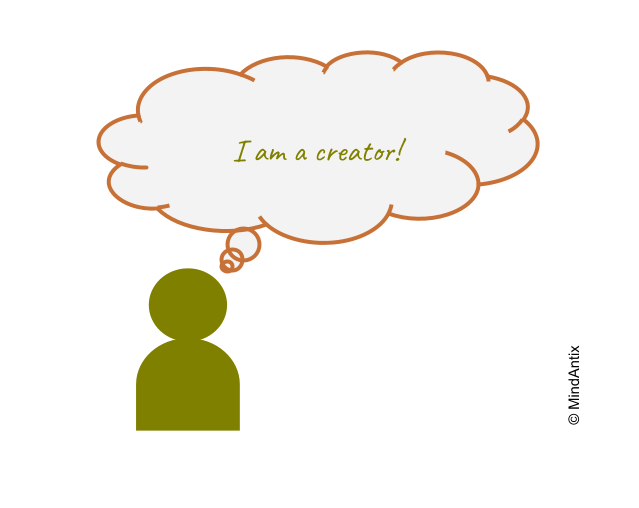During our enrichment programs we often run into students who get stumped with creativity exercises. In one session, I gave a group of 4th and 5th graders a simple divergent thinking exercise. As the students started writing down their ideas, I noticed one girl who seemed uncomfortable with the exercise. When it was time for students to share their ideas, she refused to participate. Later, during a different activity, I stopped by her desk and gently asked if she wanted to share her ideas with me. She crumpled up her sheet of paper and tearfully said that she doesn’t really have any good ones.
This isn’t an isolated case. Many students, including those in gifted programs, find creative thinking challenging. One reason lies with our education system which heavily emphasizes analytical thinking at the expense of creative thinking. Students are so used to the “one right answer” approach in education that they don’t know how to approach open-ended problems with several potential solutions. The gifted student who can confidently say the answer to a math problem because she can double check her answer, doesn’t have the same level of confidence for ambiguous problems with multiple solutions.
This is harmful for students in the long run. As we transition from the “knowledge” to the ”creative” economy, students are increasingly ill-prepared to contribute meaningfully to the workforce. As work expectations shift toward higher creativity, it’s leading to a creativity gap – the disparity between valuing creative performance in adults and not fostering creativity in students.
So, how do we better prepare our students to become confident creators? The answer starts with building a growth mindset towards creativity, what researchers call the “creative mindset.”
Carol Dweck pioneered the theory of growth mindset that improved educational outcomes for many students and revolutionized the way we approach learning. Dweck found that, when faced with challenges, some students give up too easily while others doubled down on learning. She realized that students who gave up easily had a fixed mindset, where they believed that intelligence is innate and therefore extra effort would not yield better results. The other students displayed a growth mindset – a belief that intelligence and skills are malleable. More interestingly, Dweck found that educators could shift students to a growth mindset and help them become better learners. Her growth mindset intervention workshops helped numerous students improve their math and science scores.
Growth mindset has now become ubiquitous in both education and the workforce. However, most people view a growth mindset as applicable only to learning new skills (“I can learn new things”). They don’t realize that mindsets are equally important to creativity (“I can create new things”).
By leveraging a growth mindset for creativity, we can help students build the ability and the confidence to be creators and innovators. Below are three ways to build a creativity fostering environment in your classroom.
Emphasize Creative Mindset: Much like learning new skills, our brain also grows when it tries to create new things. Creativity often requires making connections between unrelated things or looking at the problem with different perspectives. When students practice these skills their brains adapt accordingly in order to make them better at creative thinking. Similar to the growth mindset, educators can emphasize that our brains are like a muscle that grows stronger the more we practice creative thinking. If students find creativity hard, it’s a sign that their brains are stretching and learning to get better at it.
Appreciate Non-conformity: Creativity by definition depends on non-conformity. To foster creativity, educators need to provide opportunities for students to think independently to come up with original ideas and perspectives. By exploring ideas outside of mainstream norms, students build creative confidence. Educators are often worried that by allowing students to voice non-conforming ideas will lead to chaos. It doesn’t have to. Educators can create explicit times or projects where students get to be creative, and a respectful environment for ideas to be shared with each other.
Model Creativity: Nothing inspires students more than seeing their teachers embody the skills they are learning. By sharing their own creative pursuits, educators set the expectation that creativity is valued in their classroom. When teachers share their failures and how they overcame them, students learn to approach setbacks with a problem solving mindset. This builds perseverance towards challenging problems, which further boosts growth mindset.
Bloom’s taxonomy places “creating” as the top skill for education. Without the ability to convert their knowledge into new solutions, students miss out on learning how to be valuable contributors. Unfortunately, most teacher training programs don’t emphasize creativity and typical school curriculums don’t integrate creative thinking. However, creative thinking skills are not that hard to cultivate. By deliberately building mindsets, modeling creativity themselves and providing adequate opportunity, educators can foster creativity in their students.
This article first appeared on edCircuit.

